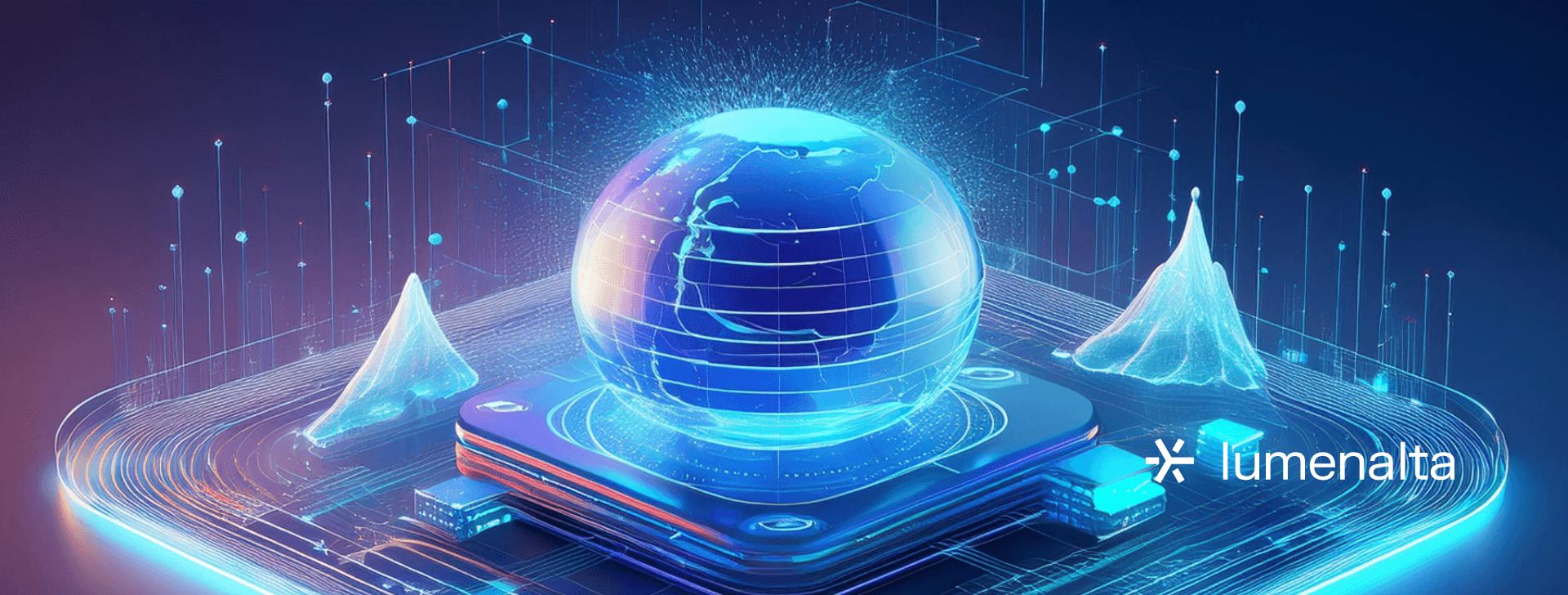

12 key differences of machine learning vs NLP
JAN. 21, 2025
6 Min Read
Machine learning and natural language processing (NLP) are two essential fields of artificial intelligence that have reshaped how businesses operate and innovate.
While machine learning focuses on creating predictive systems from data, natural language processing specializes in interpreting and generating human language. They equip companies to tackle complex challenges, automate processes, and unlock measurable value across industries. Understanding their unique strengths and applications is critical for utilizing these technologies to maximize efficiency and returns.
Key takeaways
- 1. Machine learning focuses on identifying patterns in structured and unstructured data for tasks like prediction and optimization.
- 2. Natural language processing specializes in analyzing and generating human language, making it ideal for text-based and conversational tasks.
- 3. Both machine learning and NLP rely on distinct algorithms, tailored to the specific type of problem and data being addressed.
- 4. Machine learning excels in applications like fraud detection and predictive maintenance, while NLP powers tools like chatbots and language translation.
- 5. Implementing these technologies effectively requires clear business objectives, quality data preparation, and continuous performance monitoring.
What is machine learning?
Machine learning is a branch of artificial intelligence focused on creating systems that learn and improve from data without requiring explicit instructions. These systems use algorithms to identify patterns, predict outcomes, and automate tasks based on historical and current data. Its ability to adapt over time makes machine learning a practical tool for solving complex industry challenges.
Organizations use machine learning to enhance efficiency, show hidden opportunities, and increase returns. Applications span various areas, including predictive maintenance, fraud detection, and personalized recommendations. It can process structured data, like spreadsheets, and unstructured data, such as images or text, making it versatile for tackling real-time and large-scale problems.
"Machine learning involves developing models that learn patterns from data to perform tasks such as prediction and classification."
What is natural language processing?

Natural language processing focuses on teaching machines to interpret and generate human language effectively. This branch of artificial intelligence uses advanced algorithms to analyze and process text or speech, converting complex language into actionable data. It allows systems to understand context, identify intent, and extract meaningful insights.
Organizations rely on natural language processing to create scalable solutions that streamline communication, reduce manual workloads, and improve operational efficiency. Applications include sentiment analysis, conversational agents, language translation, and automated text summarization. Its ability to handle unstructured language data offers significant value for businesses with large volumes of textual or spoken information.
12 key differences of machine learning vs NLP

The main difference between machine learning vs natural language processing lies in their focus and application. Machine learning involves developing models that learn patterns from data to perform tasks such as prediction and classification. On the other hand, natural language processing is a subset of artificial intelligence that concentrates on authorizing systems to comprehend and manipulate human language.
| Feature | Machine learning | Natural language processing |
|---|---|---|
| Definition and scope | Models that learn from data to make predictions | Teaching systems to understand and generate language |
| Core functionality | Pattern recognition, prediction, optimization | Language comprehension and interaction |
| Input data types | Structured and unstructured | Primarily unstructured, text and speech |
| Relationship with AI | Subfield of AI | Subfield of AI |
| Algorithms used | Regression, classification, clustering | Parsing, semantic analysis, sentiment detection |
| Application areas | Prediction, image recognition, recommendations | Chatbots, language translation, sentiment analysis |
| Domain-specific expertise | Often generalizable | Requires linguistic or contextual knowledge |
| Model interpretability | Varies by algorithm | Often complex due to language context |
| Computational complexity | Depends on data and model | High for large-scale text or speech analysis |
| Dependency on language context | Not language-specific | Entirely reliant on language structure and meaning |
| Role of feature engineering | Important in most cases | Often combined with linguistic preprocessing |
| Evolution and advancements | Rapid progress across industries | Significant growth in conversational AI |
1. Definition and scope
The definition of machine learning centers on building systems capable of learning from data to automate predictions, classification, or evaluation. Its scope includes applications across various fields, from predictive analytics to autonomous systems.
Natural language processing, however, is a specific area of artificial intelligence that focuses exclusively on understanding and generating human language. Its scope includes language modeling, text comprehension, and conversational interactions.
2. Core functionality
Machine learning’s primary functionality involves recognizing patterns and using them to make accurate predictions or classifications. Based on feedback, these systems learn from historical data and refine their performance over time.
Natural language processing focuses on allowing machines to interact with humans through text or speech. It involves tasks like parsing language structure, analyzing sentiment, and generating contextually appropriate responses.
3. Input data types
Machine learning is versatile in handling structured data, such as tables, and unstructured data, like images and videos. Its flexibility allows it to be applied across varied data types. This adaptability makes it suitable for a wide range of applications.
Natural language processing, in contrast, exclusively deals with unstructured data in text and speech. It focuses on extracting meaning and patterns from linguistic data rather than numerical or visual inputs.
4. Relationship with artificial intelligence
Machine learning and natural language processing are both subfields of artificial intelligence, yet they serve different purposes. Machine learning is a broader domain, encompassing techniques used in various AI-based systems, from image recognition to predictive analytics.
Natural language processing is a specialized subset of artificial intelligence that applies machine learning techniques to handle language-based data. Its relationship with machine learning often involves utilizing these models to improve text comprehension and response accuracy.
5. Algorithms used
The algorithms used in machine learning include regression, decision trees, support vector machines, and neural networks. These approaches permit tasks like classification, prediction, and optimization.
Natural language processing employs algorithms specific to linguistic tasks, such as tokenization, sentiment analysis, semantic parsing, and part-of-speech tagging. These techniques allow systems to understand grammatical structures and contextual meaning effectively

6. Application areas
Machine learning applications include predictive maintenance, fraud detection, image recognition, and recommendation engines. Its versatility allows it to serve industries such as healthcare, finance, and manufacturing.
Natural language processing is often used for tasks like customer service chatbots, machine translation, and document summarization. These applications are particularly valuable in sectors dealing with large amounts of textual data, like legal services, e-commerce, and media.
7. Need for domain-specific expertise
Machine learning models often perform well without requiring deep domain-specific knowledge, especially when trained on generalized datasets. Customization, however, may require domain expertise.
Natural language processing systems frequently require linguistic expertise or domain-specific knowledge to interpret context accurately. This dependency is especially critical when dealing with specialized jargon or multilingual content.
8. Model interpretability
The interpretability of machine learning models varies depending on the algorithms used. Linear regression models are easy to interpret, while neural networks often function as black boxes.
Natural language processing models can also face challenges with interpretability due to the complexity of language. Contextual nuances and linguistic intricacies make it harder to explain certain model decisions.
9. Computational complexity
Machine learning's computational requirements depend on the size of the dataset and the complexity of the model. Simpler models often need fewer resources, while deep learning models require substantial computational power.
Natural language processing is computationally intensive, especially with large-scale language datasets or tasks like real-time translation. Processing text and speech at scale adds significant overhead.
10. Dependency on language context
Machine learning models are not inherently tied to language context and can process data in numeric, categorical, or visual formats. Their success depends on identifying patterns in the dataset rather than interpreting language meaning.
Natural language processing depends entirely on language context, requiring systems to understand grammar, semantics, and cultural nuances. This dependency adds complexity to its implementation.
11. Role of feature engineering
Feature engineering plays a central role in machine learning, allowing developers to extract relevant information from data to improve model performance. Automation tools like feature selection have made this process faster and more efficient.
In natural language processing, feature engineering often involves linguistic preprocessing, such as tokenization, lemmatization, and part-of-speech tagging. These steps prepare language data for analysis, permitting more accurate insights.
12. Evolution and advancements
Machine learning has seen significant advancements, with new techniques like deep learning and reinforcement learning transforming its applications across industries. Its growth continues to push boundaries in areas like robotics and autonomous systems.
Natural language processing has progressed particularly with advancements in large language models that enhance conversational agents and translation tools. Innovations in contextual understanding and semantic modeling have broadened its capabilities significantly.
Machine learning vs NLP in real-world application

Machine learning and natural language processing have distinct roles in practical use cases, offering tailored solutions for various industry needs. Their applications often intersect, but the goals they achieve and the methods they use differ significantly.
Machine learning applications
- Predictive maintenance: Manufacturing and energy sectors use machine learning to predict equipment failures, reducing downtime and optimizing maintenance schedules.
- Fraud detection: Financial institutions rely on machine learning to analyze transaction patterns and identify potentially fraudulent activities.
- Recommendation systems: E-commerce platforms and streaming services implement machine learning to provide personalized recommendations based on user behavior.
- Image recognition: Machine learning powers facial recognition, medical imaging diagnostics, and automated quality control in manufacturing.
- Supply chain optimization: Logistics companies utilize machine learning for inventory management, demand forecasting, and route optimization.
Natural language processing applications
- Chatbots and virtual assistants: NLP drives customer service solutions by allowing automated agents to provide real-time, context-aware responses.
- Sentiment analysis: Businesses analyze customer feedback, reviews, and social media data using NLP to understand public opinion and improve services.
- Language translation: NLP systems grant accurate, contextual translations for global communication and multilingual support.
- Document summarization: Legal and media industries use NLP to generate concise summaries from large documents or reports, saving time and resources.
- Voice recognition and transcription: NLP converts speech to text, allowing applications such as virtual meeting transcriptions, voice commands, and accessibility tools.
While machine learning focuses on optimizing processes and identifying patterns across differing data types, natural language processing specializes in making sense of human language. Their complementary capabilities make them essential in developing intelligent, scalable solutions across industries.
"Natural language processing depends entirely on language context, requiring systems to understand grammar, semantics, and cultural nuances."
When to use machine learning vs NLP
Understanding when to implement machine learning versus natural language processing depends on your problem and the nature of your data. Machine learning is ideal for scenarios involving structured data, pattern recognition, and predictions. On the other hand, natural language processing is suited for tasks that require analyzing and generating text or speech.
Machine learning is the best fit if you aim to predict outcomes, optimize processes, or display trends from numerical or categorical datasets. It excels at applications like sales forecasting, anomaly detection, and product recommendations.
NLP provides the necessary tools to process and interpret unstructured linguistic data for language understanding tasks. It is beneficial for improving customer engagement through chatbots, extracting insights from large volumes of text, and automating tasks involving human language.
Combining machine learning with natural language processing can also amplify results, especially in sentiment analysis cases where machine learning algorithms process insights derived from NLP tasks. Selecting the right approach starts with clearly defining the business problem and understanding the data you need to analyze.
Implementing strategies for machine learning and natural language processing

Successfully adopting machine learning and natural language processing requires a clear framework that connects your business objectives to actionable steps. Without structured planning, organizations risk inefficiencies or missed opportunities. A well-defined implementation strategy helps you maximize value while achieving measurable results, such as improved operational efficiency, reduced costs, or faster delivery of outcomes.
1. Defining business objectives
Start by clarifying the problem you aim to solve and the outcomes you want to achieve. Whether it’s enhancing customer interactions, streamlining processes, or boosting financial returns, aligning the project with specific goals ensures clarity and purpose. Defining these objectives also helps set measurable benchmarks to track progress, such as increasing model accuracy, reducing response times, or improving forecast precision. A focused approach directly ties the solution to your business needs.
2. Choosing the right algorithms
Selecting the right algorithms is crucial for machine learning and natural language processing. For machine learning tasks, techniques like decision trees or gradient boosting may be ideal for structured data, while neural networks excel in unstructured contexts. For natural language processing, models like sentiment analysis classifiers or transformers (such as GPT-based systems) offer advanced capabilities for language comprehension. Matching algorithms to the complexity of the problem and the type of data ensures optimal performance and efficiency.
3. Preparing and labeling datasets
Quality data is essential for building successful systems. Start with a thorough cleaning and preprocessing phase to address inconsistencies, duplicates, or missing values. For natural language processing tasks, linguistic preprocessing, such as tokenization and removing irrelevant characters, is critical. In supervised learning, annotated datasets are vital for training models accurately. Annotation might involve labeling data for tasks like text classification, named entity recognition, or language translation. Comprehensive preparation lays the groundwork for consistent and reliable outputs.
4. Testing and evaluating models
Once a model is built, it must be rigorously tested to assess performance. Metrics like precision, recall, and accuracy offer a clear picture of its strengths and weaknesses. Natural language processing systems often require additional evaluations, such as testing how well a chatbot maintains context or how accurately a model summarizes text. Continuous testing throughout development helps fine-tune performance, allowing adjustments to improve reliability and consistency before full-scale deployment.
5. Monitoring and optimizing performance
Ongoing monitoring is essential after deploying a machine learning or natural language processing solution. Regularly tracking metrics like latency, error rates, and prediction accuracy helps identify opportunities for refinement. Retraining models with fresh data over time allows them to adapt to shifting conditions or new inputs. This process also supports scalability, ensuring the system delivers value as business needs develop.
Implementing these strategies provides a clear roadmap for success, ensuring that machine learning and natural language processing projects are aligned with business objectives and deliver tangible outcomes. With the right approach, organizations can reduce time to value, reveal new opportunities, and achieve long-term efficiency and scalability.
Machine learning and natural language processing are redefining how businesses solve problems, offering new ways to optimize, scale, and achieve impactful outcomes. At Lumenalta, we specialize in creating tailored solutions that align with your goals, from predictive analytics to language-powered customer experiences. Let’s build more competent, efficient systems that drive results and position your business for long-term success.
Table of contents
- What is machine learning?
- What is natural language processing?
- 12 key differences of machine learning vs NLP
- 1. Definition and scope
- 2. Core functionality
- 3. Input data types
- 4. Relationship with artificial intelligence
- 5. Algorithms used
- 6. Application areas
- 7. Need for domain-specific expertise
- 8. Model interpretability
- 9. Computational complexity
- 10. Dependency on language context
- 11. Role of feature engineering
- 12. Evolution and advancements
- Machine learning vs NLP in real-world application
- When to use machine learning vs NLP
- Implementing strategies for machine learning and natural language processing
- Common questions about differences of machine learning vs NLP
Common questions about differences of machine learning vs NLP
What are the main differences between machine learning and natural language processing?
How are machine learning and NLP used in business?
Can machine learning work without NLP?
What are examples of NLP models in daily use?
Why is feature engineering important in machine learning and NLP?
Want to learn how NLP can bring more transparency and trust to your operations?

















